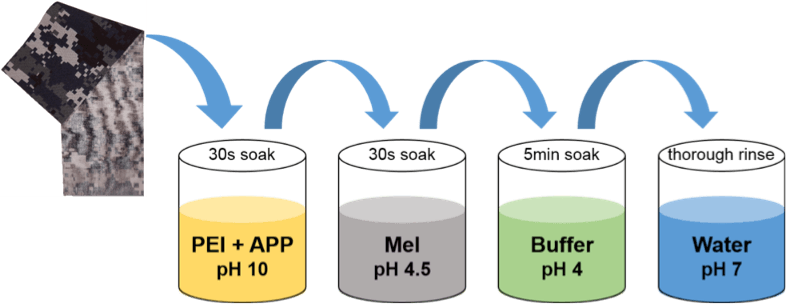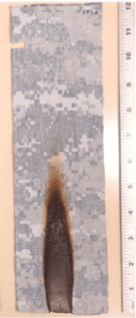We are using the pH-dependent solubility of water-borne polyelectrolyte complexes (PEC) to impart flame retardant coatings to cotton fabric in a two-step process, which successfully makes cotton self-extinguishing (Haile et al. Polymer Degradation and Stability 2015). In this coating, a polyphosphate acts as an active reagent that promotes char formation, providing a thermal shield that protects the underlying fabric from the heat of the fire. An additional processing step, involving adding melamine to the coating system, was used for a nylon-cotton blend (see schematic of coating procedure below). This water-based halogen-free coating generates melamine polyphosphate in-situ (Leistner et al. Polymer Degradation and Stability 2015). With less than 20 wt% of this coating deposited on the nylon-cotton fabric, it self-extinguishes in vertical flame testing. This work demonstrates the ability of a PEC nanocoating to prevent ignition of various fabric types with very few processing steps, relatively low weight gain, and environmentally-benign ingredients.


Schematic of the coating procedure used to deposit polyethylenimine and melamine polyphosphate onto NYCO fabric (above). The first step was conducted in an ultrasonic bath, and the fabric was dried after this soak. NYCO fabric after vertical flame testing (above right).
